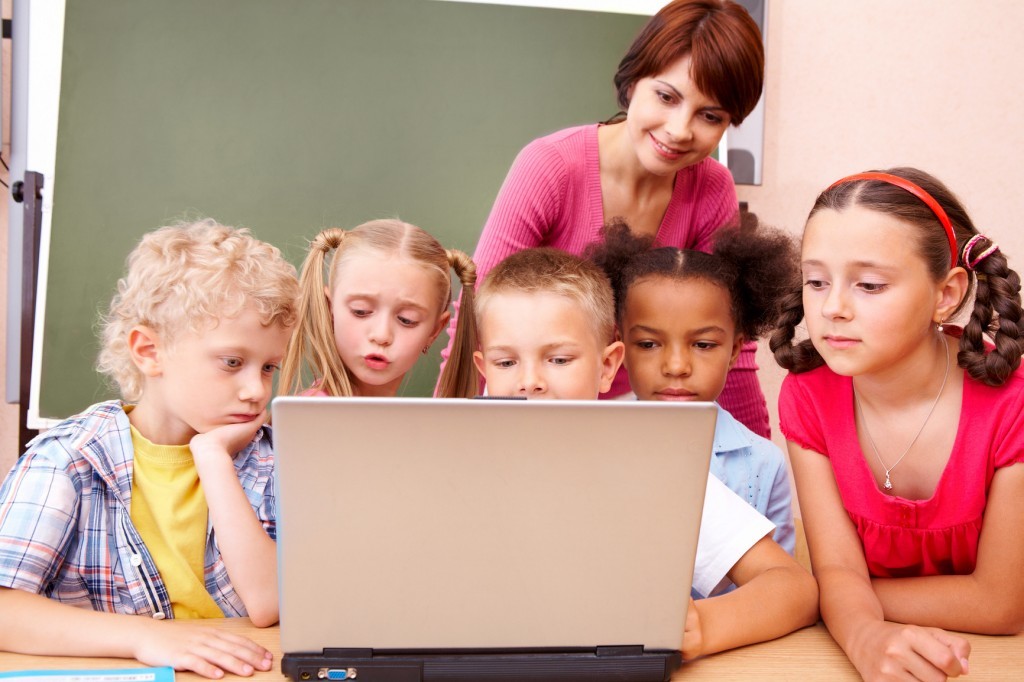Math, Teacher Resources
Leading Trends in Education To Get Behind
Advancements in technology are reshaping the classroom and the way students and educators interact. Schools around the country are embracing the multimedia revolution and integrating new software and devices into their course work. Here are five trends sweeping the nation in education and how you can jump on board.
1. BYOD.
“Bring Your Own Device” initiatives encourage students to bring their own personal technology into the classroom. Laptops, notebooks, smart phones, iPads, and other smart devices are rapidly shedding their image as time-wasting distractions and are instead finding a rightful place in the world of academia. Educational apps, helpful resources, and the ability to stream content and internet seamlessly have propelled these tools to the front and center of education. Nevertheless, if you are hesitant about allowing your students to bring devices to class, you are not alone. Many have raised questions about their tendency to distract students, and many schools require students to keep phones and laptops turned off during class hours. However, students typically respond excitedly to an opportunity to bring their devices so as long as you keep them engaged and on track, this trend can be very useful in your lessons.
2. Blended Learning.
This concept marries traditional in-class learning with at-home, online learning practices. Similar to “flipping the classroom,” students receive the bulk of their class information via online channels and are able to use in-class time for application of this knowledge and deeper problem solving. This blending of at-home and in-class engagements allows teachers to get the most out of their planning and instruction time and benefits students in developing their technical skills, as well as providing further resources to help them grasp the concepts in their lessons. There are numerous user-friendly sites out there that can help you provide digital “spaces” for your students. Check out Blackboard and WordPress to start!
3. Game-Based Learning.
Game-based learning is a newer trend that is being seen more and more in less traditional classrooms across the country. Interactive software allows students to complete tasks and assignments in a manner more closely resembling video games than other online learning. Typically, they feature reward systems that encourage students when they succeed with digital badges or some form of positive recognition. Not only does this motivate students to study and learn, but also the positive reinforcement promotes self-esteem while keeping students engaged and interested. There are a number of software systems that cover a wide array of subjects that you can integrate into your lesson planning. Many offer trial runs, so if you are considering introducing game-based learning into your classroom, it may be beneficial to do a trial run. See how your students respond to this learning technique before outfitting your classroom with the latest game-learning gadgets.
4. Social Media in Education.
While social media may seem to permeate every facet of our personal and professional lives, it has also begun to work its way into the uncharted territory of academics. Educators have started using social media to connect and share with students on a more personal level. While there is a right and a wrong way to do this, those who have used the most professional way to integrate social media into their lesson plans have found much resulting success. Sites like Twitter can be used to track trending topics relevant to class lessons, receive information about world news as it is occurring, and teach students business and marketing skills. It can also be used as an online forum where students can ask the teacher questions, discuss issues with one another, and share links to stories that are relevant and helpful to the group. You may be hesitant in exploring this avenue; however, embracing this technology may prove very useful, once you find an appropriate way to use it that works for you and your classroom.
5. Interactive Whiteboards.
One of the more common current trends is the use of interactive whiteboards. By using touchscreen technology and video projection, teachers can exchange their typical dry erase boards for an interactive screen. These interactive whiteboards allow educators and students alike to draw, click, and move things on the board, essentially creating a large touchscreen computer at the front of the classroom. Not only can they quickly turn any screen of handwriting into a quickly saved document, but they also can document notes and drawings used in the lesson. These saved files can be easily shared with students right from the board. They are a great addition to any classroom, and numerous schools the world over have begun to outfit every classroom with this valuable technology. If your school is not equipped with interactive whiteboards, grants and scholarships are available to educators to purchase interactive whiteboards for their classrooms.
Are you making the most of your continuing education? View our course catalog to make sure you’re taking the right courses.
_________________________________________________
Teachers! TeacherStep.com has been a leader in K-12 professional development and recertification courses for more than 20 years. In partnership with South Carolina ETV and Converse College, our online courses are self-paced, Common Core aligned, and offer graduate level credit from an accredited college! Most important, they are designed by teachers for teachers, including lesson plans you can use today! Take the next step. Teacherstep.com!



